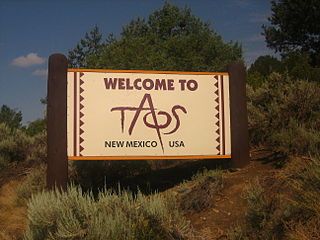New Mexico — Land of Enchantment and Environmentalism
I know I’m not the only American who has looked at a political map of the 50 states and wondered, “Wow. Are there really that many democrats in New Mexico? Hell, it’s next to Texas!” The answer, in a word, is Yes.
In fact, here’s a video report on sustainable building that suggests:
New Mexico residents are trying to break free from Los Alamos’ nuclear legacy by creating more environmentally sound ways of living. At the forefront of this struggle is renegade architect Michael Reynolds, creator of radically sustainable living options through a process called “Earthship Biotecture.” Reynolds’ solar homes are created from natural and recycled materials, including aluminum cans, plastic bottles and used tires. These off-the-grid homes minimize their reliance on public utilities and fossil fuels by harnessing their energy from the sun and wind turbines. In Taos, New Mexico, Reynolds gives us a tour of one of the sustainable-living homes he created.


It will be interesting to see what the resale value is of those homes and whether the original owner is able to recover his investment.
Yes, it would – particularly since the 2005 asking price for Dennis Weaver’s Earthship home was $3.75 million or $375 per square foot.
“Sunridge” is located in Ridgway, Colorado. In 1989, Weaver built his Earthship incorporating 3,000 used tire-bricks which were rammed with over 300 pounds of dirt to form thick, dense thermal mass walls.
The thinner non-structural walls were made from 350,000 aluminum cans. Natural stone and tile floors were laid and the wood used to construct the roof and finish the interior came from dead-standing spruce and beetle-killed blue pine.
The tire walls create a thermal mass that keeps the indoor climate constant while outdoor temperatures fluctuate. The house is oriented to the south to absorb solar radiation that enables year round growing of fruits, vegetables, and plants.
This Earthship is connected to large solar panels that supplies almost all the energy needed. The Earthship’s monthly electric bill is around $50, an incredibly low figure for a 10,000 sq. ft. home. It cost only a half million dollars to construct. That’s $50 per square foot – and it was pretty much a prototype.
The home now also serves the current owner as a vacation rental that’s available from November to March at $1,200.00 for a week’s stay.
Hmm… 750% return in 15 years, not bad – that’s an average increase of 43% of the home’s original value every year.
Apparently he came out quite well. I wonder whether the demand would be great enough to maintain a reasonable rate of return if perhaps 1,000 such homes were built in the area.
You might find the following link useful with regard to green buildings and their growing presence and influence in the marketplace:
https://new.usgbc.org/articles/session-spotlight-role-green-buildings-economic-recovery
I live in one of the more desirable neighborhoods in California, and over the past 40 years my home has appreciated by only about 800% – from $33 per square foot, to $258 per square foot today. Of course, it peaked with the market in 2006 at $426 a square foot, but I never had an interest in selling anyway.
If you’re genuinely curious about the pioneering architect who developed the earthship techniques, here’s a link:
http://www.greenhomebuilding.com/earthship.htm
Personally, if I was in the market for an aesthetically pleasing and environmentally cost-efficient home that runs on 6 cents per square foot annual power outlay, I’d be very serious about examining such a home, no matter how many others were in the neighborhood.
When my present home was in the design phase, I considered insulated concrete form construction and a ground source geothermal heat pump. However, the extra cost was shockingly high so I just had 2 x 6 studs used instead of 2 x 4 which increased energy efficiency somewhat.
In the multiple listings for houses for sale, there is no standard for specifying energy efficiency. That should change.
I get 14.4% (compounded annually), but still good news.